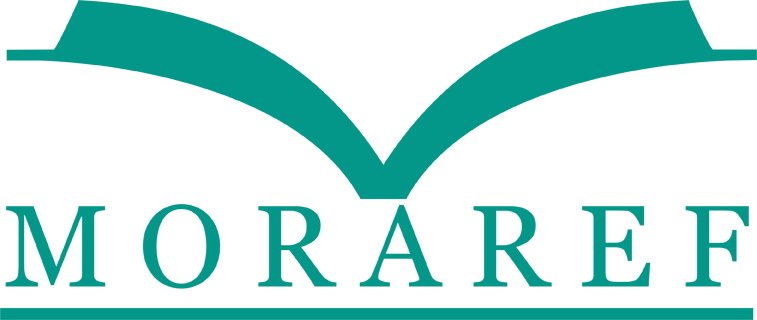Dental Monitoring Application of Simogi to Change Parental Behavior for Maintaining Children Dental Health
Abstract
Children's oral and dental health needs to be maintained from an early age in order to sustain the integrity of their teeth. A new dental health care monitoring named SIMOGI (Dental Health Monitoring System) application is proposed. This application is used by parents and it’s integrated with dental therapist’s account. The application has features of dental health care checklist and dental danger sign. The aim of this study is to analyze changes in parental behavior towards the maintenance of children's oral health with the implementation of SIMOGI. This research is an experimental study with pretest and posttest design with control group design. The total sample used is 20 parents of elementary school in grade 3. A behavioral questionnaire on dental and oral health maintenance on knowledge, attitudes and actions were done to measure the effect changes. The category is grouped into bad, fair and good. This experiment ran for 21 days. The analytical test used is univariate analysis, bivariate analysis using the Wilcoxon test. The results show that in knowledge, there is no effect on control (p-value 1.000) and intervention group (p-value 0.785). There is effect on intervention group’s attitude (p-value 0.018) and no effect on control group (p-value 0.317). There is effect both in intervention (p-value 0.024) and control group (p-value 0.102). There is an effect of using the SIMOGI application on changes in parents' attitudes and actions in maintaining children's dental health. Knowledge of the parents is already in the good category.
Keywords
Full Text:
PDFReferences
S. Gibson and S. Williams, “Dental caries in pre-school children: associations with social class, toothbrushing habit and consumption of sugars and sugar-containing foods. Further analysis of data from the National Diet and Nutrition Survey of children aged 1.5-4.5 years,” Caries Res., vol. 33, no. 2, pp. 101–113, 1999, doi: 10.1159/000016503.
A. Lam, “Elements in oral health programs,” N Y State Dent J, vol. 80, no. 2, pp. 26–30, 2014.
J. Baginska and W. Stokowska, “Pulpal involvement-roots-sepsis index: a new method for describing the clinical consequences of untreated dental caries,” Med Princ Pract, vol. 22, pp. 55–60, 2013.
S. A. Craig, S. R. Baker, and H. Rodd, “How do children view other children who have visible enamel defects?,” Int J Paediatr Dent, vol. 25, no. 6, pp. 399–408, 2015.
M. Ueno, K. Shinada, T. Zaitsu, S. Yokoyama, and Y. Kawaguchi, “Effects of an oral health education program targeting oral malodor prevention in Japanese senior high school students.,” Acta Odontol Scand, vol. 70, no. 5, pp. 426–431, 2012.
M. Berzinski, A. Morawska, A. E. Mitchell, and S. Baker, “Parenting and child behaviour as predictors of toothbrushing difficulties in young children,” Ineternational Journal of Paediatric Dentistry, no. May, pp. 1–10, 2019, doi: 10.1111/ipd.12570.
Kementerian Kesehatan RI, “Hasil Utama Riskesdas 2018,” 2018. doi: 10.1177/109019817400200403.
World Health Organization (WHO), “What is the burden of oral disease?,” 2020.
M. S. Al-Darwish, “Oral health knowledge, behaviour and practices among school children in Qatar,” Dent Res J (Isfahan), vol. 13, no. 4, pp. 342–353, 2016.
A. Lutfi, R. Flora, H. Idris, and M. Zulkarnain, “Hubungan Stunting dengan Tingkat Keparahan Karies Gigi pada Anak Usia 10-12 Tahun di Kecamatan Tuah Negeri Kabupaten Musi Rawas,” Jurnal Akademika Baiturrahim Jambi, vol. 10, no. 2, p. 426, Sep. 2021, doi: 10.36565/jab.v10i2.395.
S. Vishwanathaiah, “Knowledge , Attitudes , and Oral Health Practices of School Children in Davangere,” Int J Clin Pediatr Dent, vol. 9, no. 2, pp. 172–176, 2016.
F. Atarbashi-moghadam and S. Atarbashi-moghadam, “Tooth Brushing in Children,” Journal of Dental Materials and Techniques, vol. 7, no. 4, pp. 181–184, 2018.
B. Underwood, J. Birdsall, and E. Kay, “The use of a mobile app to motivate evidence-based oral hygiene behaviour,” Br Dent J, vol. 219, no. E2, 2015, doi: 10.1038/sj.bdj.2015.660.
O. Byambasuren, E. Beller, and P. Glasziou, “Current Knowledge and Adoption of Mobile Health Apps Among Australian General Practitioners : Survey Study Corresponding Author :,” JMIR Mhealth Uhealth, vol. 7, no. 6, p. 313199, 2019, doi: 10.2196/13199.
D. L. Id, R. Norman, and S. Robinson, “Consumer preference to utilise a mobile health app : A stated preference experiment,” PLoS One, pp. 1–12, 2020.
C. André, C. F. Pasluosta, B. Esko, D. Bandeira, and R. Righi, “Artificial Intelligence In Medicine Internet of Health Things : Toward intelligent vital signs monitoring in hospital wards,” Artif Intell Med, no. March 2017, 2018, doi: 10.1016/j.artmed.2018.05.005.
M. N. Mohanty and S. Das, “Advances in Intelligent Computing and Communication,” in Advances in Intelligent Computing and Communication, 2020.
M. Prasad, C. Manjunath, A. Murthy, A. Sampath, S. Jaiswal, and A. Mohapatra, “Integration of oral health into primary health care: A systematic review,” J Family Med Prim Care, vol. 8, no. 6, p. 1838, 2019, doi: 10.4103/jfmpc.jfmpc_286_19.
P. Nepaul and O. Mahomed, “Influence of Parents’ Oral Health Knowledge and Attitudes on Oral Health Practices of Children (5–12 Years) in a Rural School in KwaZulu-Natal, South Africa,” J Int Soc Prev Community Dent, vol. 10, pp. 605–12, 2020, doi: 10.4103/jispcd.JISPCD.
L. Chen et al., “Are parents’ education levels associated with either their oral health knowledge or their children’s oral health behaviors? A survey of 8446 families in Wuhan,” BMC Oral Health, vol. 20, no. 1. BioMed Central, Jul. 11, 2020. doi: 10.1186/s12903-020-01186-4.
S. A. Sharief and W. O. Marhani, “Relationship Between Level of Knowledge, Attitude and Motivation of Breast Self Examination (BSE),” Aloha International Journal of Health Advancement (AIJHA), vol. 1, no. 2, p. 29, Aug. 2018, doi: 10.33846/aijha10201.
DOI: https://doi.org/10.31983/jkg.v10i1.9789
Article Metrics
Refbacks
- There are currently no refbacks.
| View My Stats |











.png)


.png)
.png)








